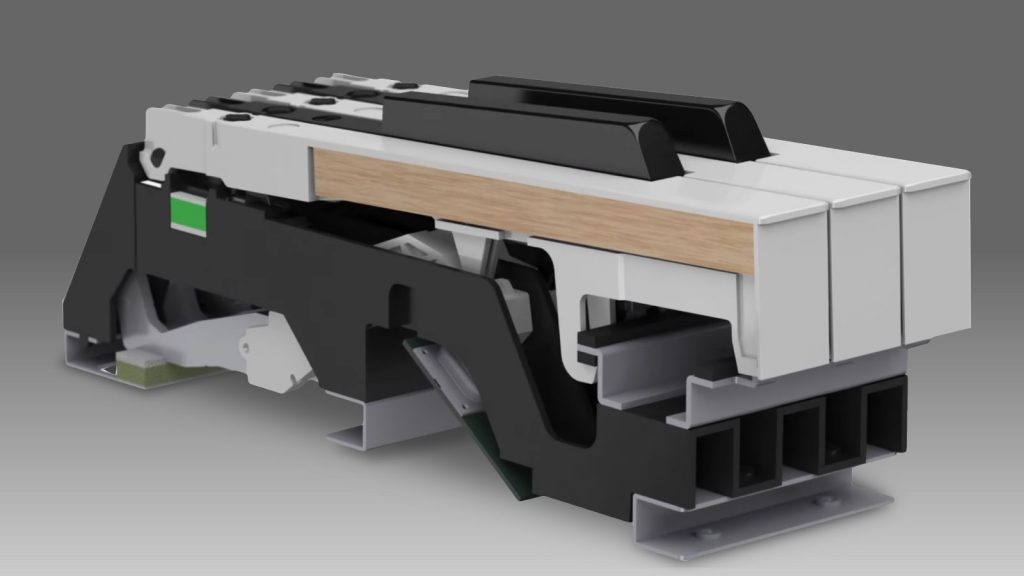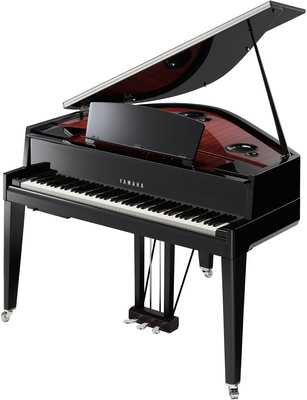All about Wooden Keys
If you expect the term “wooden keys” to mean a keyboard like that of an upright or grand piano, you’d be right. If you look at the action of an acoustic piano, you see a keyboard cut from wood. Therefore, the following points should also apply to a digital piano with wooden keys:
Solid wood keys: All 88 keys are cut from solid wood. Casio and Kawai offer this feature on mid-range digital pianos. Other brands use such keyboards only in more expensive hybrid digital pianos.
Key length: The keyboard construction is basically that of a grand piano. Here, keys move over a balance rail and are balanced by counterweights. The front part of the key up to the balance rail pin determines the angle of the keystroke.
A digital piano with wooden keys and grand piano-like action is called a hybrid digital piano – the upper class of digital pianos. Yamaha uses the term “AvantGrand” to differentiate its hybrid models from conventional digital pianos. The entry-level model, the Yamaha AvantGrand NU1X with custom-made upright action, is available for around 4,300 Euros. The AvantGrand NU3X, on the other hand, is in a class of its own: Designed as a smart digital grand piano, it is priced at approximately 18,000 Euros.
With a price tag of around 9,000 Euros, the Kawai Novus NV10 is also one of the more expensive digital pianos. If you want to enter the wood class at a lower price, you should take a look at Casio’s “Grand Hybrid” series, developed in cooperation with the German piano manufacturer C. Bechstein.
A tip is the Kawai CA series – here you can enter the hybrid digital piano class for just under 2,000 Euros. Casio’s smallest Grand Hybrid, the GP-310, starts at just under 3,000 Euros.




















